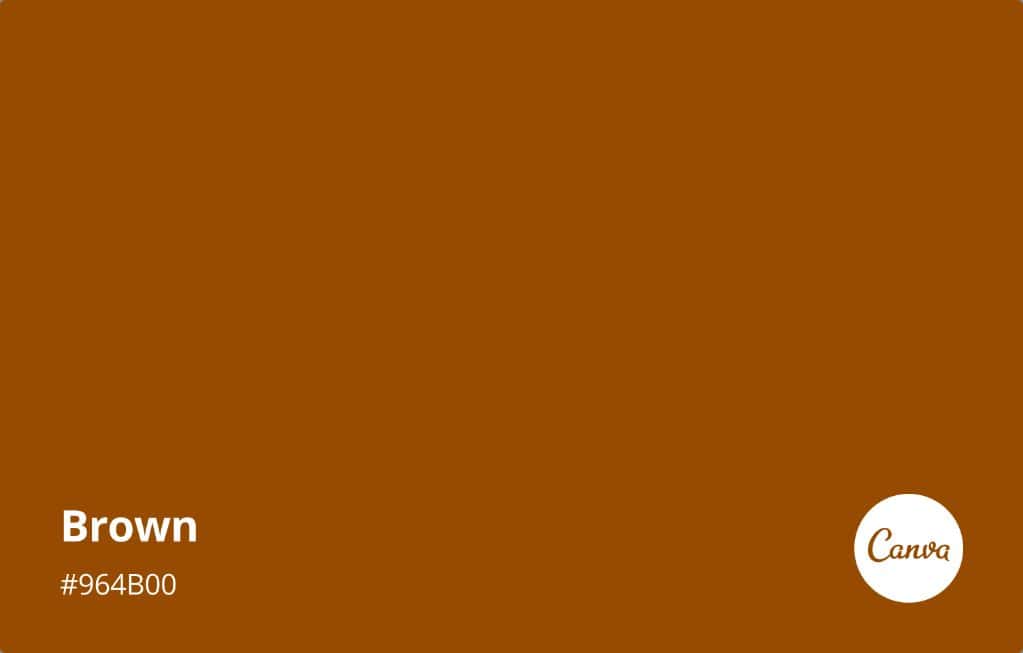Brown is an earthy color that can have different shades and meanings. Understanding the technical definition, cultural symbolism, and variations of brown can provide more context on this versatile color.
What is brown technically?
In basic color theory, brown is considered a tertiary color. This means it is created by combining the three primary colors – red, yellow, and blue. When mixed together, these three primary colors make the secondary colors – orange, green, and purple. When secondary colors are combined, they make tertiary colors like brown.
More specifically, brown is made by mixing complementary colors orange and blue. The resulting shade of brown depends on the amount of each color used. More orange yields browns with a warmer, redder tone. More blue results in cooler, grayer browns.
On the technical side, brown is not considered a color within the visible color spectrum. The spectrum represents wavelengths of visible light. Brown contains multiple wavelengths and lacks a dominant one, so it is seen as a combination of colors rather than a distinct color.
Within color models that separate hue, saturation, and brightness – like HSB and HSL – brown is described as a dark, low saturation color. This means it has low color intensity and vibrancy compared to brighter, more vivid colors.
What are the different shades and meanings of brown?
There are many shades of brown, ranging from dark browns to light tans. Here are some of the most common brown shades and their typical meanings:
| Shade | Meaning |
|---|---|
| Dark brown | Earthy, natural, rustic |
| Light brown | Warm, peaceful, calming |
| Red brown | Rich, intense, passionate |
| Orange brown | Friendly, cheerful, energetic |
| Yellow brown | Historic, antique, aged |
| Green brown | Drab, murky, earthy |
| Taupe | Sophisticated, upscale, versatile |
In general, darker browns are associated with nature, earthiness, stability, heritage, and a grounded feel. Lighter browns convey warmth, comfort, and tranquility. Reddish browns suggest intensity and passion, while greenish browns feel more neutral and utilitarian.
How does brown differ from similar colors?
Brown has similarities to several other colors but also key differences that set it apart:
Brown vs. Black:
- Black is darker, cooler, and more neutral than brown.
- Brown has more warmth, red/orange undertones, and a lighter, softer feel than black.
Brown vs. White:
- White is extremely light, bright, and purely neutral, while brown is dark and much warmer in tone.
- Brown conveys natural, earthy qualities that stark white does not.
Brown vs. Gray:
- Gray is a true achromatic color, meaning it contains no hue. Brown contains multiple hues blended together.
- Gray can feel clinical and detached, while brown has an organic, grounded quality.
Brown vs. Beige:
- Beige is extremely light, usually classed as an off-white. Brown covers a wide range of darker, richer shades.
- Beige has a more delicate, muted look compared to deeper, warmer browns.
Brown vs. Tan:
- Tan is a light peachy-brown shade. Brown encompasses both light tans and very dark shades.
- Tan conveys summery warmth, while brown can feel cooler if it has blue undertones.
So while brown shares similarities with other neutrals, its multi-hued earthiness gives it a distinct identity and feel.
How is brown used symbolically and culturally?
Brown carries many symbolic meanings in language, culture, and storytelling. Here are some of the key symbolic associations of the color brown:
- Nature – Brown represents earth, soil, trees, wood, and other organic elements of nature.
- Rusticity – The color of aged wood, leather, and stone conveys a rustic, old-fashioned simplicity.
- Heritage – Dark brown expresses links to the past through antique furnishings and vintage artifacts.
- Poverty – Historically, brown’s connection to the dirt poor and low social status led to it being seen as a lowly color.
- Humility – Franciscan monks’ simple, plain brown robes convey humility and function over vanity.
- Utility – Khaki and brown uniforms represent utilitarianism and hard work over flashiness.
Brown also has strong symbolic ties to the earth, the autumn season, and hibernation in winter. It represents wholesomeness for foods like brown rice, bread, and sugar. Brown conveys durability and resilience for materials like bronzed metals, weathered wood, and aged leather.
Politically, brown is connected to fascism through the Nazi’s brown uniforms and paramilitary Brownshirts. However, brown also represents anti-fascism and resistance through the brown shirts of anti-Nazi protestors.
How is brown used in fashion and design?
In fashion and interior design, brown takes on a variety of stylish identities. Here are some of the most prominent ways brown is used in these fields:
- Earth tones – Brown clothing, furniture, and decor tap into natural earthy aesthetics.
- Vintage looks – Distressed brown leather and weathered wood create industrial, heritage designs.
- Neutral background – As a neutral, brown makes an excellent subtle backdrop color.
- Texture – The richness of brown suede, tweed, wood grain, adds tactile depth.
- Grounding balance – Brown’s heaviness can anchor light, airy palettes.
- Coziness – Warm brown tones bring a snug, welcoming feel to interiors.
Brown also pairs beautifully with other colors. It works as an earthy complement to blue, pops against bright white, and brings out luxurious dimension against black. Overall, brown brings an organic, artisanal look whether used neutrally or boldly.
Conclusion
Brown is a versatile, multi-faceted color that spans neutral, earthy, cozy, rugged, and vintage identities. Its technical properties, cultural meanings, symbolic associations, and design applications make brown far more nuanced than many assume. With knowledge of its origins, shades, comparisons, and uses, the depth and breadth of brown becomes clear. So while seemingly simple, brown has complex roots that make it a truly unique color.


